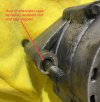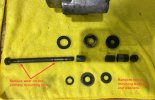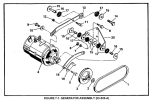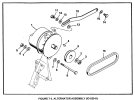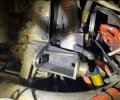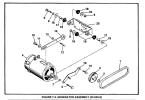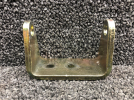The likely reason for a one-way clutch in cars would be a way to prevent torsional crankshaft vibration from being reflected/applied to the alternator armature. I've never heard of this sort of thing before either, but vibration amplitude limiting would be the effect of a one way drive clutch. It may be a reflection of factory opinion of the casual nature of auto repair work, where the field belt tension is probably expected to be done by guess and by gosh, and no amount of otherwise fancy isolation hardware is going to be properly serviced in the field. A one way clutch would be bomb proof but it would seem to me to be excessively exotic otherwise. Cars etc run over widely varying rpms too, and the one way clutch thing would be effective over a wide range of rpms. Aircraft engines essentially run at fixed rpm.
On the IO 520 rubber isolation system described above, rubber (elastomers is a better word....) is almost always dynamically loaded in shear if it is to provide isolation or damping. Opposed aircraft engines squiggle (rock) about their yaw axis at high frequencies (especially twice crankshaft rpm for any 4 cyl engine). The 520 CID 6 cyl should be fairly smooth unless there is a major internal imbalance involving the moving mass CG. The ride given to anything case-mounted gets wild as you get away from the engine CG though. It has to be this vibration mode that is anticipated with the elastomeric sheets or bushings in this application. But imagine the change in elastomeric characteristics with temperature or when a generator is casually replaced by lighter weight alternator. Probably some field 'engineering' was involved.
